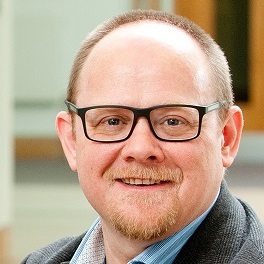Prof. Emil Jovanov
Associate Professor, Electrical and Computer Engineering Department; Director of Real-Time Physiological Monitoring Laboratory; Co-director of mHealth Laboratory (Laboratory for mobile health and wellness monitoring); The University of Alabama in Huntsville, AL, USA.
Bio
Dr. Emil Jovanov received his Dipl. Ing., MSc, and PhD from the University of Belgrade in Computer Engineering. He was Research Scientist at Institute Mihajlo Pupin in Belgrade from 1984 – 1998, and Assistant Professor at School of Electrical Engineering, University of Belgrade from 1994-1998. Since 1998, Dr. Jovanov is with the Electrical and Computer Engineering Department at the University of Alabama in Huntsville.
Dr. Jovanov has more than 30 years of experience in the design of application specific hardware and software systems and biomedical signal processing. Dr. Jovanov is recognized as the originator of the concept of wireless body area networks for health monitoring and one of the leaders in the field of wearable health monitoring. Dr. Jovanov is a Senior Member of IEEE, and serves in IEEE EMBS Technical Committee on Wearable Biomedical Sensors and Systems. He is a member of the Conference Editorial Board and Theme 7 Editor (Biomedical Sensors and Wearable Systems) of IEEE Engineering in Medicine and Biology Society, Associate Editor of the IEEE Transactions on Information Technology in Biomedicine and IEEE Transactions on Biomedical Circuits and Systems, and Editorial Board member of Applied Psychophysiology and Biofeedback. Dr. Jovanov was the Guest Editor of two special issues of IEEE Transactions on Information Technology in Biomedicine: “Body Sensor Networks: From Theory to Emerging Applications” (2009) and “M-Health: Beyond Seamless Mobility and Global Wireless Health-Care Connectivity” (2004). Dr. Jovanov received 2017 IEEE Outstanding Educator Award, 2014 Innovator of the Year Award, and 2009 Outstanding Paper Award of IEEE Transactions of Information Technology in Biomedicine. He published more than 200 papers and 16 book chapters.
Title and Abstract of the Keynote Speech
Do you know how I feel?
Sensing physiological signals from objects of everyday use
Recent technological advances of sensors and wearable health monitors, as well as emergence of smart homes and Internet of Things (IoT) technologies create new opportunities for integration of Body Sensor Networks and smart environments. Smart objects equipped with physiological sensors that we call Smart Stuff, can provide robust monitoring of activities of daily living and context for wearable physiological sensors. Synergy of information from wearable monitors and Smart Stuff generates completely new insights into the state of the user and supports personalized eHealth and mHealth services. We will present several new exciting applications and case studies of the recent projects.
Prof. William Scanlon
 Director, Centre for Wireless Innovation, ECIT Institute, Queen’s University Belfast
Director, Centre for Wireless Innovation, ECIT Institute, Queen’s University Belfast
Bio
Professor Scanlon received his Ph.D. degree in 1997 and he was appointed as Lecturer at Ulster University (UK) in 1998, Senior Lecturer and Full Professor at Queen’s University of Belfast (UK) in 2002 and 2008, respectively. He also held a part-time Chair in Short Range Radio at the University of Twente, The Netherlands from 2009 to 2014. Prior to starting his academic career he had 10 years of industrial experience, having worked as a Senior RF Engineer for Nortel Networks, as a Project Engineer with Siemens and as a Lighting Engineer with GEC-Osram. He was Chair of Wireless Communications at Queen’s University Belfast for 10 years and was most recently Head of School of Electronics, Electrical Engineering and Computer Science. In 2018 he was appointed as CEO of Tyndall National Institute (Ireland). Professor Scanlon’s research expertise is mainly in antennas and wave propagation with some work in RF and microwave based sensors, wireless devices and systems.
Professor Scanlon is a recognised pioneer in wearable and medical device communications, particularly in relation to implantable solutions, having worked and published in this area for more than 20 years. He has been a keynote speaker for the International Symposium on Antennas and Propagation (2018), the IEEE Intl. Microwave Workshop Series on RF and Wireless Technologies for Biomedical and Healthcare Applications (2014), the NATO Military Communications and Information Systems Conf. (2010), the Intl. Conf. on Bodynets (2010) and the European Workshop on Conformal Antennas (2007). He has been a Series Editor of the IET Book Series on Telecommunications and Networking, he was an inaugural Associate Editor of the IEEE Journal of Translational Engineering in Health and Medicine and he served as an Associate Editor for IEEE Antennas and Wireless Propagation Letters. Professor Scanlon received a Young Scientist award from URSI in 1999, he was a recipient of the 2010 IEEE H. A. Wheeler Prize Paper Award for IEEE Trans. Antennas and Propagation and he delivered the 2012 NATO International Lecture Series on Next Generation Communications.
Title and Abstract of the Keynote Speech:
Electromagnetic Considerations for Engineering Minimally Invasive Implanted Bioelectronics
Despite significant efforts, one of the most challenging problems facing medical bioelectronics (micro/nanosystems, actuators and sensors) remains the physical device size. This is generally a concern, but it is particularly important for applications where one or more elements of the bioelectronics system is implanted within the patient’s body. Advances in mixed signal ASIC technology and micro/nano interfaces including biophotonics for sensing and therapeutics are gathering pace, but there are sticky challenges remaining for the miniaturization of energy harvesting, storage and transfer and communication, especially in the context of generalized applications where tissue characteristics, implantation depth and positioning are not known or not well controlled. This presentation will consider the electromagnetic aspects of this problem and will present recent work on tissue-independent antennas, electrically small implant antenna efficiency and implant to body surface communication links and set these in the context of state of the art applications in medical bioelectronics.


